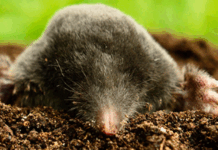Cattle like to swim too, but owners should be wary of potential health risks involved
Water can be refreshing for both humans and cattle. But sometimes ponds may cause risk to the animals, especially in summer. That is why the water must be monitored.
“Watering ponds need to be checked to make sure that the water is clean and not full of waste and sediment,” Kansas State University veterinarian Bob Larson said on a beef cattle podcast. “In some situations, you may want to consider fencing off the pond.”
In addition, the water must be analyzed for blue-green algae, which is widespread statewide during the summer months. The algae looks like a scum on the surface of the water and may be an opaque green color. In addition, small floating blue-green clumps may appear. According to the Kansas Department of Health and Environment, these are indications that a harmful bloom may be present.
Last week, KDHE warned of algae being present in Harvey County East Lake, Hodgeman County State Fishing Lake, Jerry Ivey Pond in Saline County, Lake Afton and Webster Reservoir in Rooks County.
Warnings were issued for Buhler City Lake, Ford County Lake, Lake Jeanette, and Marion County Lake and Reservoir. Although cattle do not enter these lakes, the prevalence of the algae in nearby locations with similar conditions makes monitoring ponds that livestock utilize necessary.
Sometimes producers fence off the pond to keep the animals away or to keep the banks from eroding. As the animals move up and down the banks, soil transfers into the water, causing a decrease in water and erosion of the bank.
“If part of the shoreline is eroding, then producers can just fence out that area while still giving cattle access to the water,” K-State veterinarian Brad White said.
Depending on who is spending time in the water is relevant. Veterinarian Brian Lubbers said dairy cows spending significant time in cooling ponds can develop mastitis. “However, there are some physiological differences in teat confirmation between dairy and beef cows that put beef cattle at a lower risk for those complications developing as a result of their time in the pond,” Lubbers said.
In addition, some cattle can develop foot rot, but this condition is easily treatable. But like humans, cattle enjoy cooling off and spending time in the water. “Overall, the risk of health challenges for beef cattle in ponds is low,” Lubbers said during the podcast, “and when considering investments in the herd, fencing off the pond is a low priority on my list of recommendations for producers.” As reported in The Hutchinson News.




